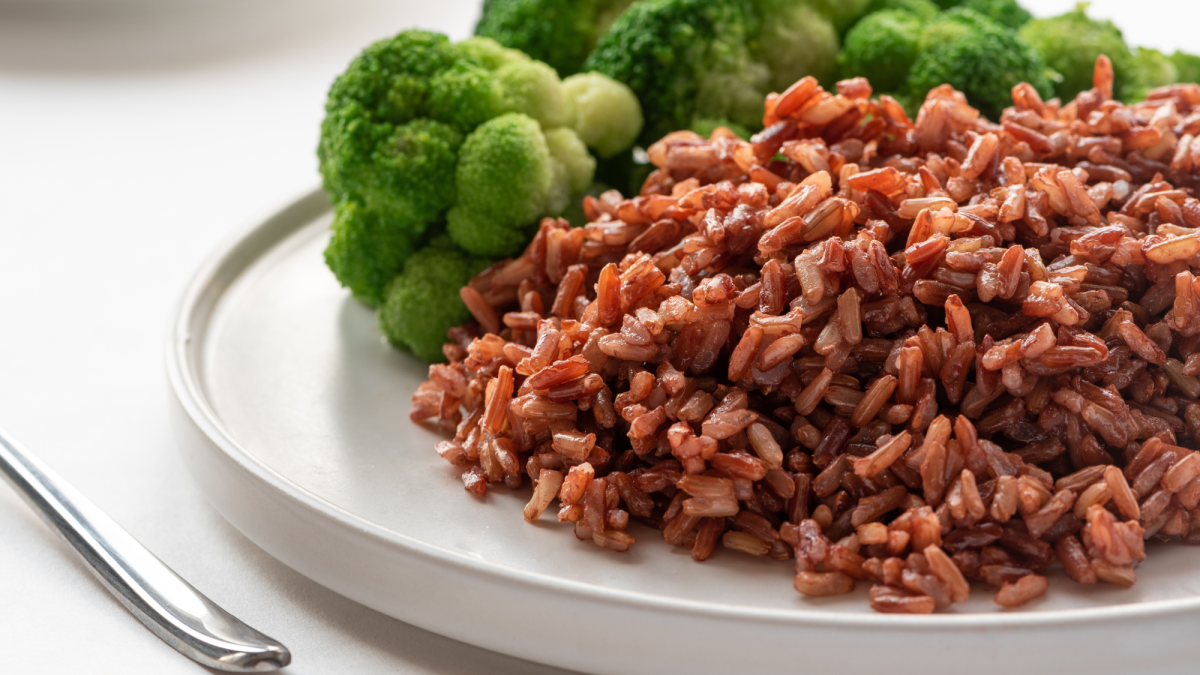Rise (rice) above for healthy food – Featuring red rice

So much goodness in a grain
April 25, 2023
Low Glycemic Index Rice for Prediabetic and Diabetic Patients
May 3, 2023By Dr Ng Choon Ming (Monash University)
We have heard it before; obesity is on the rise among adults and children. Often, diet is to be blamed, along with the challenges faced when trying to eat healthy. Various studies and reports showed that unhealthy eating is a common problem in many countries. For starters, people often consume excessive refined grains, little vegetables, minimal fruits, and meals cooked using way too much oil, salt, and seasonings, regardless of when at home or outside. After all, palatability is an important factor when it comes to eating. It is no wonder one finds it difficult to eat healthily. So, where do we go from here?
Rice structure
To begin, it is all the small changes that we can make in our everyday lives, such as finding an alternative to less healthful options. For instance, our staple food- white rice. It is undeniable that white rice makes up a significant part of Asians’ diet for years. However, one should note that white rice can be rather unhealthy, especially when taken in a generous portion in a meal. This is because white rice belongs to the refined grain group in which it is processed to remove the bran and germ layers of the grain kernel. These bran and germ components contain vitamins, minerals, fiber, healthy fats, phytochemicals, and antioxidants for good health. Since the bran and germ layers are removed, white rice consists mainly of the endosperm part with mostly starchy carbohydrate and minimal vitamins.
Benefits of red rice
An alternative to white rice is red rice. Red rice is a whole grain whose kernel is still intact with endosperm, bran, and germ. For health benefits, it is recommended that at least fifty percent of grains intake should be from whole grains such as red rice. Red rice is known to be packed with health-promoting nutrients such as iron, zinc, folate, vitamin E, and B vitamins. Furthermore, the color of red rice is attributed to anthocyanin pigments, a free radical scavenger and antioxidant to fight the development of chronic diseases.
Apart from providing essential vitamins and minerals, the fiber and nutrients in red rice are imperative to improve insulin sensitivity, maintain steady blood sugar, and prevent blood sugar spikes after a meal. In relation to this, red rice is a low glycemic index (GI) food compared to most grain foods that are high GI, including white rice, yellow mee, white vermicelli, and kueh teow. Specifically, the GI value measures the effect of carbohydrate food on how quick it raises blood glucose level compared to pure glucose. GI level is ranged in the scale of 1 to 100, in which pure glucose is given the maximum value of 100. The lower the GI value of a food, the slower and more steady blood glucose rise, and fall after consumption. Therefore, it is often recommended to opt for foods low in GI value (≤55) for better blood glucose control and the prevention of diabetes. For example, UKMRC-9 red rice variety has a GI value of approximately 46. Hence it will increase blood glucose level only 46%, compared to white rice 90%, and pure glucose 100%. Additionally, low GI foods help you feel full longer, control appetite, and can be useful for weight loss.
As such, it seems that switching to red rice could do wonders for health. One may be skeptical regarding the taste, the palatability, and the texture of red rice. While it may be slightly different than the usual white rice, rest assured that red rice tastes equally good. Perhaps, it is now time to consider incorporating red rice into your diet. Red rice is versatile- it can be part of the main meals, snacks, or even desserts, for the young ones and adults.
Red rice recipes
One creative yet simple meal idea would be red rice balls. It is relatively easy to make and modifiable, based on what you have in your kitchen. To start, combine cooked steaming red rice (2 cups), minced mushroom (cooked, 1 tablespoon), a choice of your favorite vegetables such as cucumber (chopped into fine pieces, 1 tablespoon), crispy seaweed sheets cut into tiny pieces (2 sheets), light soy sauce (1/2 tablespoon) and sesame oil (1 teaspoon) in one bowl. Once perfectly mixed, let it rest for some time, allowing it to cool down. Next, shape the warm rice into a ball using your hands and plastic gloves. Squeeze lightly if needed. It would be great to add a little bit of sesame oil onto the plastic glove for the rice to stick together. This recipe will be able to make approximately 8 rice balls. Once done, you can eat it on its own as a snack or serve it with other side dishes such as egg roll and salad for dinner or packed into a lunchbox.
For desserts, red rice can be used to make pancakes. Firstly, blend red rice (1 cup) and milk (1/2 cup) in a food processer for about 2 minutes, or until it is in small pieces as desired. Then, add 1 large egg, honey (1 tablespoon), and vanilla extract (1/2 teaspoon) into the processer, and continue blending for about 1 minute, ensuring that it is well mixed. Following, pour about ¼ cup onto the cooking pan, and let it cook until slightly browned. Flip the pancake and cook until it is golden brown. Continue cooking the rest of the batch. You can serve the pancake with anything you like, for example, yogurt (2 tablespoons) and fresh fruits like bananas, mangoes, or berries. You can even consume it with savory foods such as grilled chicken and vegetables.
These are recipe ideas for you to consider- fun, delicious, and perfect for the whole family. However, if you prefer red rice eaten conventionally with mixed dishes, it is fine as well. Red rice is so versatile that it can be eaten in many ways. Plus, it is an excellent and healthy alternative to other high GI grain foods. Hence, you may want to consider incorporating red rice as part of your family’s daily meals.





